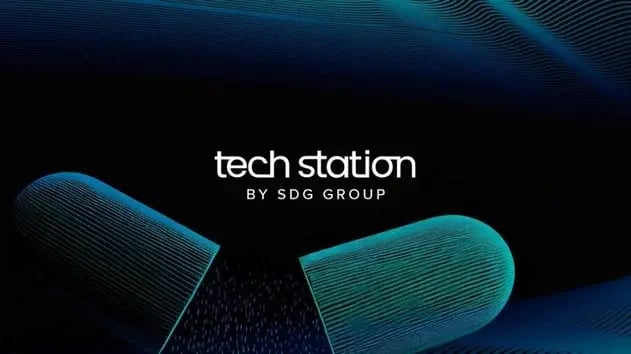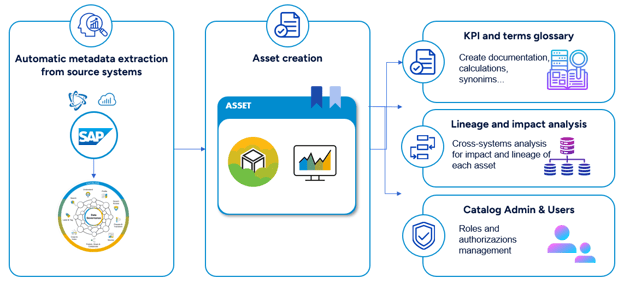Conclusion
In conclusion, SAP Datasphere Catalogue empowers organisations to achieve robust data governance driving transparency, consistency, efficiency, and scalability in an increasingly complex data environment.
Welcome to Tech Station, SDG Group’s hub for uncovering the latest innovations in data and analytics! In this article, we explore SAP Datasphere Catalogue, a powerful solution designed to simplify and enhance Data Governance. From metadata extraction and glossary management to lineage tracking and impact analysis, discover how this tool helps organisations standardise KPIs, synchronise cross-system metadata, and ensure data transparency.
Not what you were after? Check out our complete collection.

Modern companies face significant challenges in optimising data management and streamlining business processes.
The diverse sources and contexts that often contribute to building corporate data, each with its own language specifications, create a fragmented information landscape, and make it challenging to balance self-service capabilities with centralised governance.
This is where the practice of Data Governance comes to be fundamental.
Data Governance is a framework of policies, processes, standards, and practices that ensure the effective management of an organisation's data assets; it establishes authority and accountability for data, aiming to enhance data quality, consistency, security, and accessibility.
This article explores the core capabilities, functionalities, and real-world applications of SAP Datasphere Catalogue, an integrated Data Governance solution, seamlessly designed to enhance and align with SAP Datawarehouse systems.
SAP Datasphere Catalogue is a comprehensive platform designed to simplify data governance processes across complex organisational ecosystems.
It serves as a centralised repository for metadata extraction, asset management, lineage and impact analysis.

SAP Datasphere Catalogue provides a range of capabilities aimed at ensuring a unified and transparent data environment:
1. Standardised KPI Management
Organisations can establish consistent KPI definitions using SAP Datasphere Catalogue. For example, a KPI with a specific formula can be standardised across data models, ensuring uniform reporting and analytics. SAP Datasphere Catalogue, therefore, can be used as a structured Data Dictionary.
2. Cross-System Metadata Synchronisation
SAP Datasphere Catalogue facilitates seamless integration between each level of each data model, starting from the data integration layers up to the reporting layers, creating a unified metadata repository that enhances data consistency and integrity.
3. Streamlined Source Traceability
Monitors the provenance of data assets, providing users with insights into data flows across systems and their relationships with other datasets.
The main area for improvement in the SAP Datasphere Catalogue, as of today, lies in its integration with non-SAP systems and the expansion of its integration with SAP systems. Currently, the catalog can only extract metadata from SAP Datasphere and SAP Analytics Cloud.
These improvements are already part of SAP product roadmap: SAP is planning to enable metadata import via Excel and to introduce metadata extraction for SAP S/4HANA, SAP HANA Cloud and SAP ECC, and also to extend the current scope of metadata extraction from SAP Datasphere, by enabling metadata extraction from Replication Flows.
SAP Datasphere Catalogue is designed to establish a comprehensive data governance system, aligning with all the key principles of this practice:
In conclusion, SAP Datasphere Catalogue empowers organisations to achieve robust data governance driving transparency, consistency, efficiency, and scalability in an increasingly complex data environment.